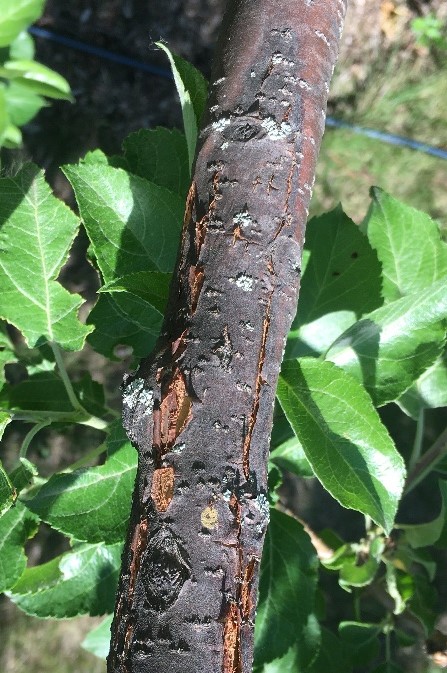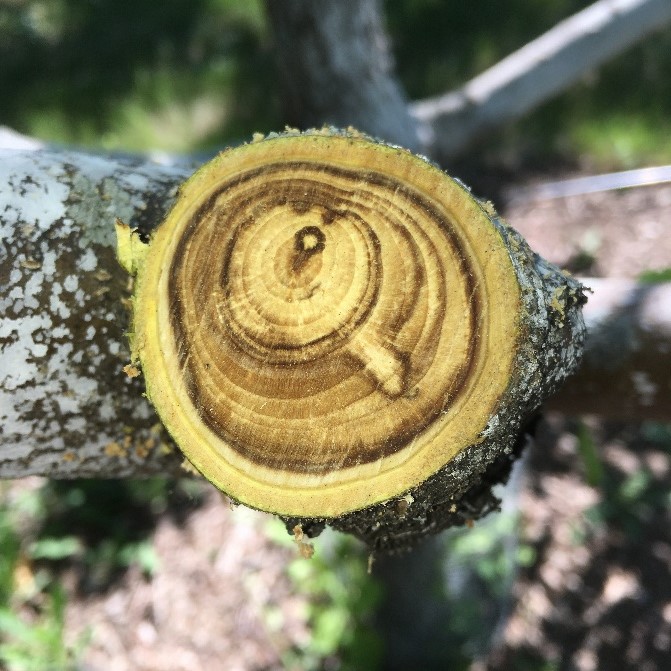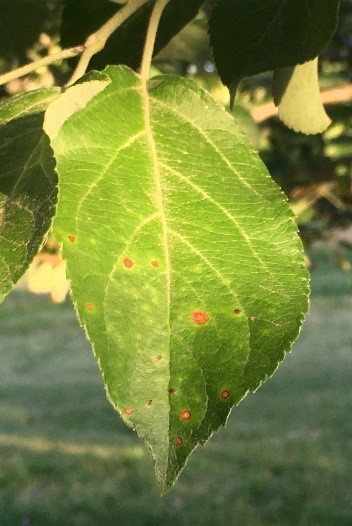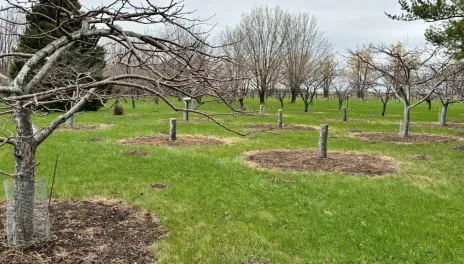Good things end...
The ‘Honeycrisp’ apple trees here at Carrington have had a good run. They were well-branched trees, so possibly 2-3 years old, when they were planted in spring 2006, and they made it to 2023. We started together and matured together!
For about 5-7 years, there has been black rot in the orchard. It started slowly, staining branches near old cuts. Then it developed into cankers or infections where sun injured some branches in spring freezes. And now it has infected whole trees.


Black rot disease is caused by the fungus Botryosphaeria obtusa. All apple trees are susceptible to it and it seems to be becoming more of a problem across the country. There are 3 forms: branches, leaves and fruit. Diseased limbs show symptoms that resemble fire blight cankers. The cankers appear as gray-brown sunken areas with rough, cracked bark. The old cankers are dry and appear blistered, cracked and peeling. The leaf form starts as very small purple spots. As they grow larger, there is a brownish-tan center with darker margins and a purple outline; this stage of disease is often referred to as frog-eye disease. In the fruit, there will be a brown rotted area with concentric circles. See: https://extension.umn.edu/plant-diseases/black-rot-apple#prune-correctly-1767010

I’ve been to the fruit and vegetable growers’ meetings in Minnesota and have heard about Honeycrisp problems for years. And I’ve been pretty smug. Our trees seemed to be doing well, which I attributed to our reliable cold – we freeze and stay frozen. But I think the many, many insults that a tree can receive in North Dakota finally built up into ‘too much’.
I am also to blame! The best time to prune trees is when it’s quite cold out. Over the years, the number of haskaps and currants that needed to be pruned first increased and it has pushed back the date when I start pruning apples. This means it’s warmer and even toward bud break by the time the apple trees are done. Sometimes it can’t be avoided. We all know that in North Dakota it can be bitterly cold and then 70s the next week.
I know that all my coworkers will miss the Honeycrisp harvest. They are so crunchy and they last so well. We’ve eaten hundreds of pounds and also donated the same to our local food pantry. As a further insult, there are not many blooms on the other trees this spring. It’s a surprise after the season of good rainfall last year. Ah, well. There’s always next year.

Kathy Wiederholt
Kathy.Wiederholt@ndsu.edu
Fruit Project Manager
